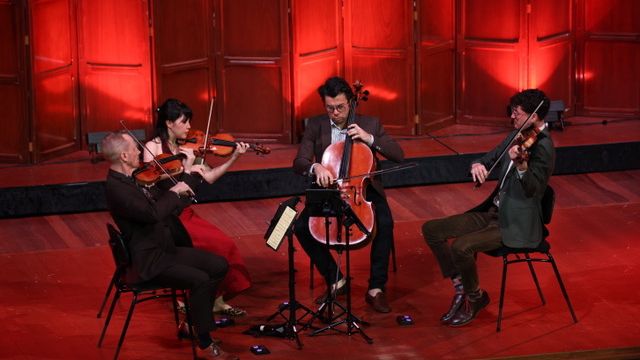Rapture
Rapture is the perfect title for The Australian String Quartet’s latest Australian tour, celebrating their 40th year. Rapture they promised and rapture it was!
Performing in the stately Elder Hall at the University of Adelaide and evocatively lit in shades of red, blue and purple, the quartet present a program of intensity, excitement and peace featuring the music of Beethoven, Perica, Janacek and Golijov, a perfect evening!
Comprising Dale Bartltrop (violin), Francesca Hiew (violin), Chris Cartlidge (viola) and Michael Dahlenburg (cello), the Australian String Quartet is renowned throughout Australia and justifiably so. They capture the essence of string composition and have a sound unlike any other quartet in the country.
Ludwig van Beethoven is the cover boy of the classical period and was going through a difficult personal and professional time in his life when composing the String Quartet No. 11 in F minor Op. 95 Serioso. He had experienced a marriage proposal rejection, his deafness was worsening, and the state of his health was deteriorating.
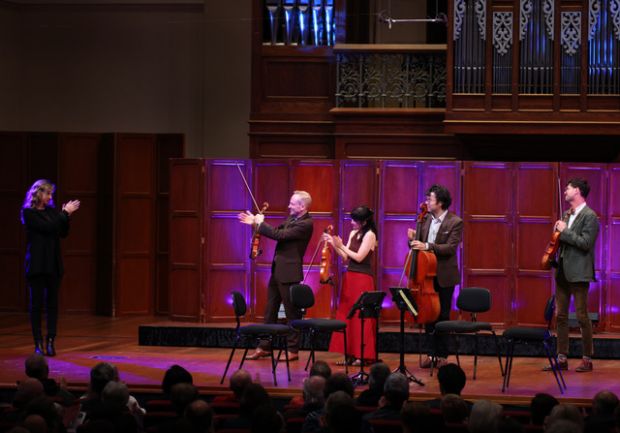
Serioso is one of the shortest and most compact of all the Beethoven quartets. Featuring four movements, Allegro con brio, Allegretto ma non troppo, Allegro assai vivace ma serioso and Larghetto espressivo, it is compact, dense, uncompromising, relentless and anticipates some of the techniques featured in later quartets.
The quartet throw themselves into Serioso with intensity and drive throwing their whole bodies into the performance actually lifting from their seats at times with the energy and drive required to play this piece to perfection. There are ‘looks’ from player to player ensuring the precision is perfect. The overall sound is bigger than the four instruments.
Vanessa Perica’s String Quartet No. 1 No Feeling is Final is a National Premiere. Perica is an award-winning composer, arranger and conductor with a leaning towards jazz.
Written in 4 movements – Maestoso adagietto, Allegro, Adagio and Prestissimo it was commissioned by the ASQ and portrays a distressing period in Perica’s life when her husband required heart surgery.
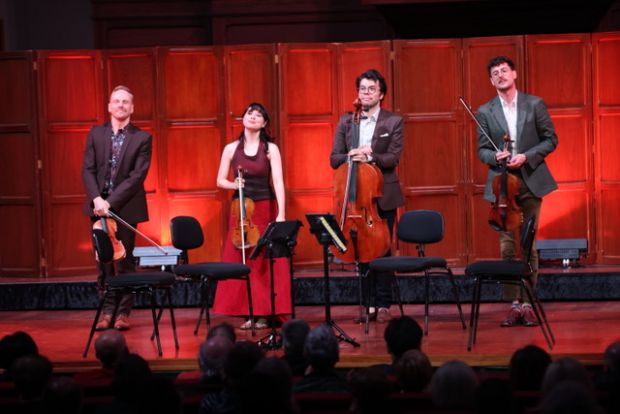
It is a work full of lyricism, haunting passages and features an extensive use of portamento, Though a technically demanding piece (particularly the 2 violin parts), it handled with ease by the Quartet who clearly devoted to this work. As a bonus, the composer was sitting in the audience.
Reminiscent of gypsy violin at times, especially the Prestissimo movement, which opens with a sudden, dramatic riff and a return to the driving rhythms heard earlier, the piece is full of significance for the composer, the quartet and the audience.
Janácek’s 2nd String Quartet, “Intimate Letters”, is regarded as a highlight of the modern string quartet literature. It was written during the composer’s last year of life, between 29 January and 19 February 1928,
The story behind Janacek’s Quartet No.2, Intimate Letters, is a tale of unrequited love and undying affection. In 1917, while vacationing with his wife, the 63 old Janacek met and fell deeply in love with a beautiful young married woman forty years his junior, named Kamila Stosslova. What followed was an eleven-year platonic relationship in which Ms. Stosslova functioned as Janacek’s muse, helping to inspire him to write four operas, two string quartets, a mass, several orchestral works, and most notably, over 700 love letters to her, which fuelled the creation of his Quartet No.2.
Intimate Letters is comprised of 4 movements; Andante – Con moto – Allegro, Adagio – Vivace, Moderato – Andante – Adagio and Allegro – Andante – Adagio.
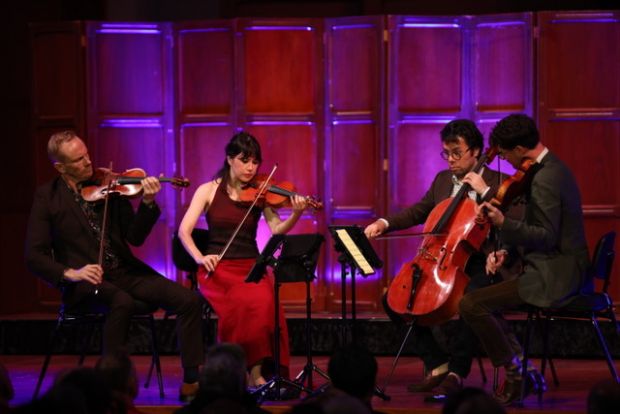
I must confess to be a Janacek fan and was not disappointed. My personal favourite for the evening, Intimate Letters is full of depth and features viola solos sensitively played by Chris Cartlidge and dazzling violin passages in the second movement played by Dale Barltrop and Francesca Hiew.
There is a real ‘passion of playing’ from the quartet in this piece. In fact, the quartet needed to withdraw for a few minutes before the last item on the program.
Metaphorical darkness, light, and space forms the inspiration for Tenebrae for String Quartet, a 2002 chamber work by Argentine composer, Osvaldo Golijov (b. 1960).
Golijov explains the genesis of the piece: “I wrote Tenebrae as a consequence of witnessing two contrasting realities in a short period of time in September 2000. I was in Israel at the start of the new wave of violence that is still continuing today, and a week later I took my son to the new planetarium in New York, where we could see the Earth as a beautiful blue dot in space. I wanted to write a piece that could be listened to from different perspectives. That is, if one chooses to listen to it “from afar”, the music would probably offer a “beautiful” surface but, from a metaphorically closer distance, one could hear that, beneath that surface, the music is full of pain.”
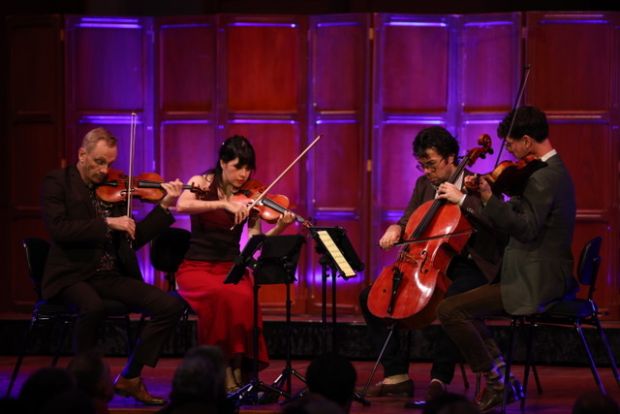
Tenebrae juxtaposes the brutality of war with the innocence and hope of youth and moves at a gentle pace.
Dimming the stage lights until there is light only on the performers with an eerie dim glow on the organ, it is a perfect choice as it serves to focus our attention on the music and provide a meditative space for reflection on the realities of war.
The quartet highlights every nuance of this memorable piece of music gently bringing the audience ‘back to earth’ and ready to face the rest of the evening.
Rapture, performed by the Australian String Quartet is an immersive experience in quality, precision, perfection and total enjoyment and cements their reputation as the finest string quartet in Australia!
Barry Hill OAM
Subscribe to our E-Newsletter, buy our latest print edition or find a Performing Arts book at Book Nook.

